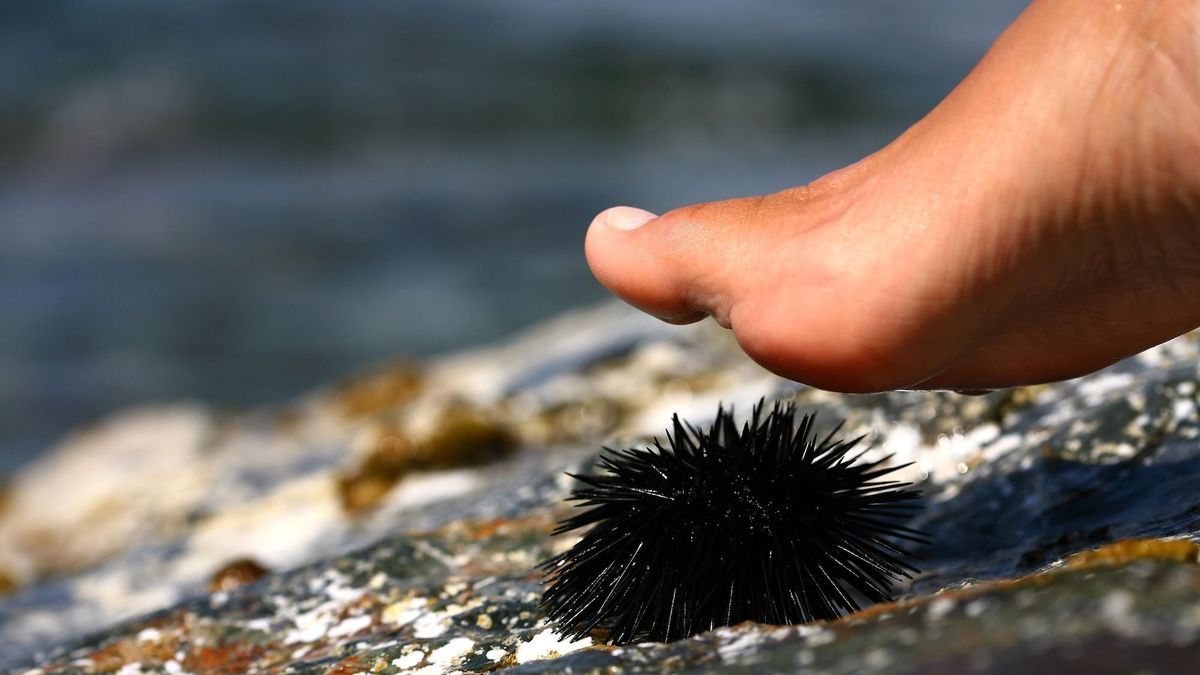
A 60-year-old German tourist has the misfortune of stepping on a sea urchin in Zanzibar. His bite was treated but 17 days later, he was hospitalized and three toes were amputated. How can we explain such a sequence? Doctors have unraveled the mystery and their discovery should make you cautious.
The terrible sting of the poorly licked sea urchin
As the authors report, the man had stepped on a sea urchin during a stay by the sea in Zanzibar. Sea urchin spines were reportedly removed and the patient's toes disinfected. Furthermore, during this episode, the man, who did not have a fever, would have received antibiotic tablets.
According to vascular surgeons, sea urchins are widespread on the coasts of all continents. Their spines have small barbels and some species can have a poison harmful to humans. Injuries caused by sea urchins are often painful and their danger comes from the fact that the stings can be colonized by bacteria and cause acute and chronic inflammation. It is therefore important to immediately remove the thorns, clean the wound and monitor it. In the event of secondary infection, you should consult and antibiotics may be necessary.
For him, vacations are a (diabetic) kick!
But for our German tourist, the misadventure does not end there. He was admitted to the emergency room 17 days later because his foot was red, swollen and with three necrotic toes. Strangely, he feels no pain. He immediately underwent surgery: his three toes were amputated. Doctors wonder: how with such symptoms, the patient was not worried about his condition before? How did the pain not bring him to the hospital before the amputation stage?
The diagnosis was made: diabetic foot syndrome with acute neuropathy. The authors report that the patient did not know until then that he had type 2 diabetes. The patient was thus put on insulin in addition to wearing protective shoes adapted to diabetes.
A common cause of amputation
According to the authors, this therefore assumes that the patient would have developed significant diabetic neuropathy from the prediabetes phase or with undiagnosed diabetes. A study published in 2015 estimates that diabetics are 5 times more likely to be hospitalized for a foot wound than the non-diabetic population. Ultimately, between 12 and 25% of diabetic people will develop a diabetic foot during their lifetime.
These foot wounds are lesions, often benign, caused by trauma, but which heal poorly due to diabetes and the neurological and vascular complications of this disease (loss of sensitivity of the feet, reduction in the natural hydration of the foot causing dryness , cracks and calluses and bone deformities of the foot, etc.). If treated quickly, most wounds heal within 3 to 6 months. But in 15% of cases, diabetic foot results in amputation.
Diabetic holiday foot syndrome: take care of your feet in summer!
The authors also discuss “diabetic holiday foot syndrome”, which they describe as foot injuries occurring during vacations in people who have long been known to have type 2 diabetes. origin, unusual stress on the feet, wearing unsuitable shoes as well as burns to the soles of the feet and acute trauma due to walking barefoot.
This study supports the idea of an underdiagnosis of type 2 diabetes. It is estimated today that in Europe, 700,000 people are diabetic without knowing it, because, depending on the type of diabetes, the first symptoms are not always present. obvious to detect.
